#Historie Naturelle
Explore tagged Tumblr posts
Photo

1er octobre 1814 : mort de l’entomologiste et voyageur Guillaume-Antoine Olivier ➽ http://bit.ly/Guillaume-Antoine-Olivier Docteur en médecine à l’âge de 17 ans, il s’adonne avec ardeur à sa véritable passion, l’étude des sciences naturelles, et se voit confier des missions en Angleterre et en Hollande pour y recueillir les insectes de ces deux pays, avant d’être chargé de rédiger la partie entomologique de l’Encyclopédie, puis d’effectuer une périlleuse expédition de six années dans l’Empire ottoman, en Perse et en Égypte
#CeJourLà#1erOctobre#Entomologiste#Entomologie#Histoire#Naturelle#Insectes#Médecine#Médecin#Découvertes#Sciences#Exploration#Voyages#Encyclopédie#Faune#Biographie#histoire#france#history#passé#past#français#french#news#événement#newsfromthepast
8 notes
·
View notes
Text
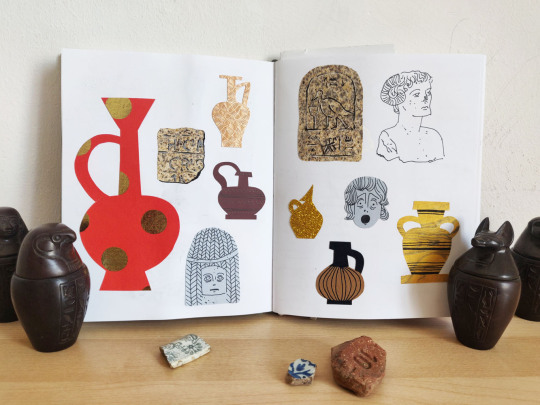
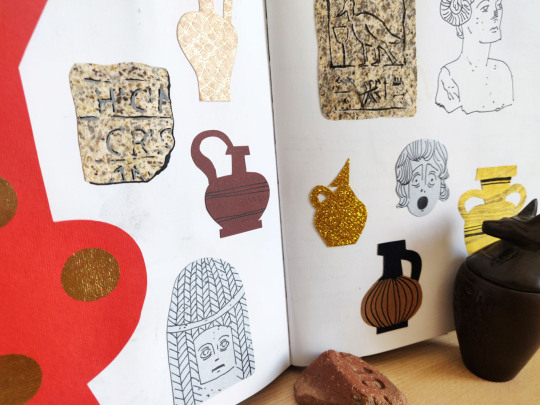

Croquis aux musées d'Avignon : archéologique en haut, histoire naturelle en bas ✌️
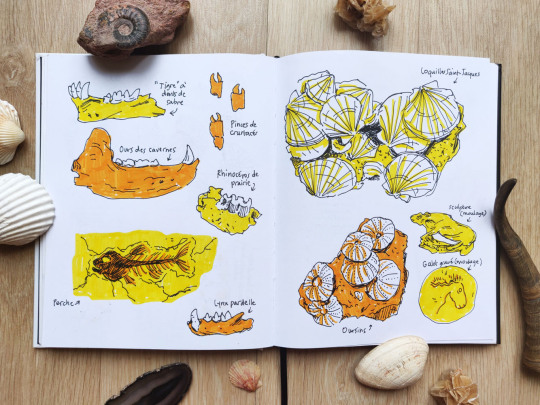
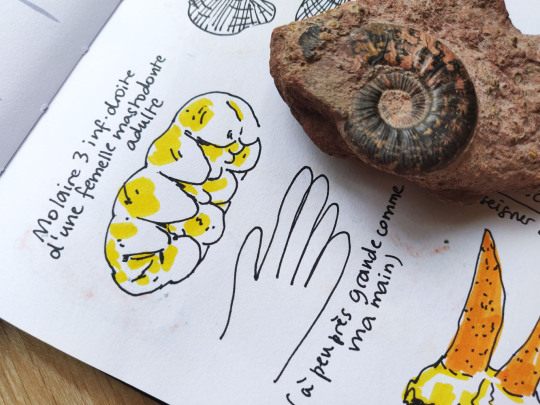
#sketchbook#artists on tumblr#illustrators on tumblr#carnet de croquis#museum#archeology#avignon#history museum#natural history museum#feutre#archéologie#histoire naturelle#musée#collage#vieux pots
20 notes
·
View notes
Text
Michel Foucault on Napoleon and the ‘man of modern humanism’
‘What do I hear? But the world of details, who has never dreamt of that other world, what of that world? I have believed in it ever since I was fifteen. I was concerned with it then, and this memory lives within me, as an obsession never to be abandoned. . . That other world is the most important of all that I flatter myself I have discovered: when I think of it, my heart aches’ (these words are attributed to Bonaparte in the Introduction to Saint-Hilaire’s Notions synthétiques et historiques de philosophie naturelle). Napoleon did not discover this world; but we know that he set out to organize it; and he wished to arrange around him a mechanism of power that would enable him to see the smallest event that occurred in the state he governed; he intended, by means of the rigorous discipline that he imposed, ‘to embrace the whole of this vast machine without the slightest detail escaping his attention’ (Treilhard, 14).
A meticulous observation of detail, and at the same time a political awareness of these small things, for the control and use of men, emerge through the classical age bearing with them a whole set of techniques, a whole corpus of methods and knowledge, descriptions, plans and data. And from such trifles, no doubt, the man of modern humanism was born.
[Quotes made bold and italic by me]
— Michel Foucault, Discipline and Punish: The Birth of the Prison, Translated by Alan Sheridan, pg. 141
#Michel Foucault#Foucault#napoleon#napoleonic#napoleonic era#Discipline and Punish: The Birth of the Prison#napoleon bonaparte#Saint-Hilaire#Notions synthétiques et historiques de philosophie naturelle#first french empire#french empire#19th century#history#philosophy#french philosophy#Treilhard#quotes#quotes by Napoleon#Napoleon quotes
12 notes
·
View notes
Text
Started a new series I'm really liking 🐲

I'll probably post the review once I've read all five of them!
#a natural history of dragons#the memoirs of lady trent#marie brennan#the lady at the coffee/bookshop was really happy to see me read it#apparently her fav is the third book 👀#i'm almost halfway through the second one so we'll see if i agree with her#currently reading#books#booklr#booklr community#une histoire naturelle des dragons#mémoires par lady trent
44 notes
·
View notes
Photo
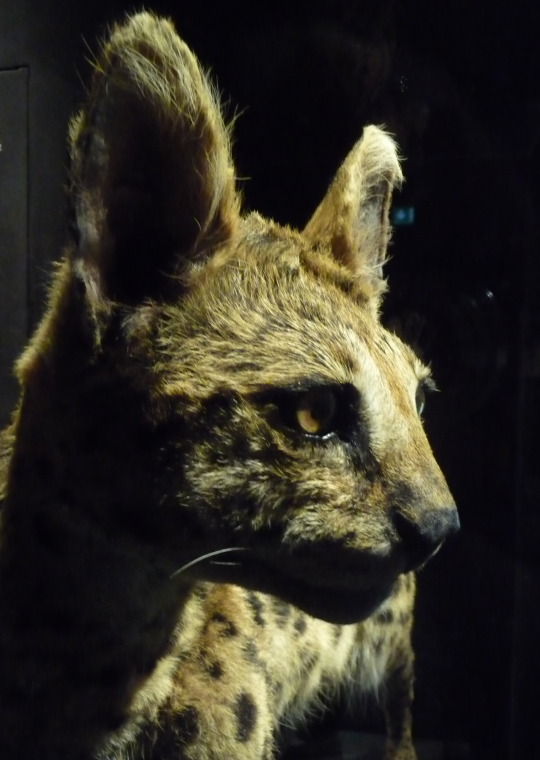
Serval (Leptailurus serval).
(Muséum d’Histoire Naturelle, Paris. Exposition Félins, 2023.)
The reason I post this is to share a piece of trivia:
Translation in publishing is sometimes very weird. When I was a kid, in the French translation of the X-men comics and the cartoon, Logan was not called Wolverine but Serval. It was years before he was actually called Wolverine.
You’ll admit, looking at a serval, not quite the same animal. ^^;;
I had always wondered whether they just feared Europeans would have NO IDEA WHAT THE FUCK IS A WOLVERINE.
So, hey, wikepedia, mon ami, help !
Here is the answer :
En France, des années 1970 aux années 1990, le nom du personnage est traduit en Serval dans les épisodes publiés par les éditions Lug. Bien que le terme « glouton »6 soit la traduction correcte de « wolverine », le terme « serval » lui a été préféré (« glouton » désignant également en français un individu gourmand). Cependant, en 1980, l'éditeur Arédit publie un épisode dans Gamma no 111 où le personnage fait sa première apparition, et traduit son nom par Glouton7. Dans les années 1990, la popularité de Wolverine est telle qu'elle égale celle des super-héros les plus fameux de Marvel avant lui, comme Spider-Man. En France, Panini Comics, qui publie depuis 1997 les comics Marvel en version française, lui rend à cette époque son nom d'origine.
In France, from the 70s to the 90s, the character’s name is translated as Serval in the issues released by the publisher Lug. Even though the word “glouton” was the correct translation for “wolverine” (NDT: animal wise), the word “serval” was prefered (as “glouton” also means an individual fond of food in French). (NDT: I confirm, to French ears, the name would have sounded somewhat ridiculous for a hero. Especially when glouton has a bit of a negative connotation too, as exaggeratedly fond of food, voracious or even greedy.) Nonetheless, in 1980, the publisher Arédit releases an episode in Gamma n°11 where the character makes his first appearence and translates his name as Glouton. In the 90s, Wolverine’s fame is such that it equals the one of the most famous Marvel superheroes before him, such as Spider-man. In France, Panini Comics, which publishes Marvel comics since 1997 in the French translation, gives him his original name back.
Thought you might find this funny. ^^
#serval#wolverine#publishing history#comics trivia#lost in translation#museum d'histoire naturelle#logan
2 notes
·
View notes
Text

"Huge Skeletons Found in France," Kingston Whig-Standard. May 6, 1933. Page 9. --- Bones of Man Seven Feet Tall Are Unearthed in Paris --- PARIS - Bones reputed to have be- longed to a man seven feet tall, have been found in a Neolithic tomb on the outskirts of Paris. A report on the discoveries has just been given at the Sorbonne. Paul Lemoine, director of the Paris Museum of Natural History, M. Lantier, curator of the archaeological museum at St.-Germain-en-Lye, Professor Rivet and other savants, have visited the tomb and are agreed that it is of sufficient, interest for excavation work to be continued with renewed effort. Eight seven-foot skeletons were brought to light beneath a huge monolith, weighing more than four tons. A number of the bones were burned. indicating that the bodies had been burned before burial, and little was found around them save a few flint arrow and spear-heads. which lead to the belief that the persons buried not of very high caste. The report of the discovery made at the Sorbonne, was read before the Societe Prehistorique de France.
#paris#neolithic tomb#neolithic#musée national d'histoire naturelle#societé préhistorique de france#natural history museum#sorbonne#anthropologie#histoire de france
0 notes
Text
for what it's worth I personally don't believe spite had anything to do with the pantry near-kiss experience at all. I think that was a 100% lucanis naturel disaster no supernatural additives present or indeed required. at most spite was watching that whole situation go down with mild puzzlement about approximately every part of it, I don't think he'd have much interest in it one way or the other. the explanation seems much more mundane and grounded and in some ways much sadder to me.
if your nervous system has never been in a place where any surge of emotion, even -- in fact sometimes especially! -- a good and exciting one makes you feel like your soul just touched a hot stove it can't get away from, then sincerely, from the bottom of my heart and without a trace of snark, thank goodness and I hope you never experience it. For the rest of you... fistbump of solidarity it's rough out here but *grits teeth* we stay silly etc. In the place lucanis is in during that part of the game, feeling like you're losing control (again even for ostensibly good happy reasons) can feel an awful lot like you're dying, or worse. on top of everything else going on for him -- again going only with non-supernatural elements and not even comprehensive: a year of non-stop horrific trauma added to pile of previous mountain of childhood and attachment trauma. chronic sleep deprivation. apparently dead grandma doubling as mother figure. cousin-brother aggressively fucking around and in real danger of finding out. fucked up the ONE thing he thought he knew how to do that's been the central pillar of his identity. the world might be ending even more than it already was because of it. keeps faceplanting with barely any dignity and having to get up again with alarming regularity GOD how could I ever not save treviso this man desperately needs a W (just one!!) like few people in the history of the world have before him. he's more caffeine than man because the alternative feels worse. it's bad in here. and ON TOP of all that he's in the process of falling just. appallingly soul-shrivingly in love, which can notably be playing on hard mode even when you're in a mostly functional place, that shit routinely rocks people to the core under the best of circumstances.
so I'm not surprised it's too overwhelming for him to handle when he tries to throw himself in head first -- in fact I'd have been more surprised if it weren't lol. he clearly wants it so much, which only makes it so much more painful that he can't actually bear to touch it when it's offered to him freely and eagerly. this is the tantalus-level awfulness of this kind of attachment trauma; food seems to be right there, you can see it, almost smell it sometimes, but no matter what you just can't seem to reach it. seemingly not for any flaw in the existence of the food, but because of something broken in you that can't or can't bear to actually eat. his deliberate flirting routine is kind of deeply dorky tbh lol (in the most endearing way possible let's be perfectly clear) and I don't think it's entirely natural to him -- that's a hastily cobbled together 'oh god I am getting the vibes here it is happening for some reason they like me for my personality quick what would illario do' approach if ever I saw it, supported by the fact that it never really makes a return after this --
BUT I do think his obvious near-unbearable delight with rook's existence and person that shines through in that scene is entirely real and unfeigned. he likes them so much. he wants so bad to be able to be close to them. he's so hungry for the reprieve and release and relief they represent to him, just for one moment, just one break from all the awfulness to have something uncomplicatedly good. and it's here, it's been offered, he's welcome!!! and he has to flinch away at the last minute anyway because he's an exposed nerve of a human being. there's a point at which every sensation including joy becomes indistinguishable from agony. he's pretty much exactly at that point. for the love of god have some mercy on him people. the feeling that salvation is right here but you're too broken a vessel to hold it is one I wouldn't wish on anyone. let him have a few moments to stare into the void before he's ready to get back up and try again surely we all deserve at least that much lol
#dragon age#dragon age: the veilguard#dragon age: the veilguard spoilers#dragon age spoilers#lucanis dellamorte#rook x lucanis#rookanis#this is literally just me ranting about the feelings he evokes in me and not really directed at anyone I just. I Feel. things#in case you can't tell. I'm the lucanis. him is me. we be like this. this all makes the too much kind of perfect sense to me#it's odd in narrative structure but it's uh. uncomfortably real in some ways. freeze is difficult to describe in conventional narrative#it's a bad time to have in a bad place. but very decent company to be in I must say I love him. so much#also I think we might have exposed some of the basic garrusness going on here haha (just one thing please just one good thing)#and how much getting there hinges on feeling completely safe in that relationship. anyway. everyone ok. I'm not but someone should be
484 notes
·
View notes
Note
There's a SUPER Rare SUPER Secret New Zealand gecko that i bet only handful of people knows about them.
It's called Gigarcanum.
I can't find a good source to learn about them. I want to know more about them cuz all I know is that their back is rusty red, they're Big (definitely), they live in New Zealand, and they don't originate in New Zealand.
You're the only one that I know that can find a good source of this Gecko. Please help learn them more, they fascinates me 🥺🙏💙💙💙💙
Gigarcanum delcourti
This species is only known from a museum specimen that had been tucked away for many decades. It did not have records of its origin.
It was originally thought, because it resembled a large, now extinct, gecko from Maori oral history, that it was most likely from New Zealand. This was believed for a long time. It does seem to match the description.

Illustration by Peter Schouten (A Gap in Nature)
However certain anatomical features, and a later DNA sequencing suggest that it was actually from New Caledonia, where its closest genetic relatives live. This is most likely not the large lizard from precolonial New Zealand (the kawekaweau)... but it's possible.
The stuffed specimen has a snout vent length of 37 cm (14.6 in) and a total length of up to 60 cm (23.6 in), making it the largest known species of gecko.
All evidence points to this animal having gone extinct by sometime in the mid-1800s, most likely before colonization of New Caledonia.

Delcourt's Gecko (Gigarcanum delcourti), family Diplodactylidae
photograph by Muséum d'histoire naturelle
182 notes
·
View notes
Note
I always have to click through to view your posts because I have "SPN" filtered. 😔
You filtered Service du Patrimoine Naturel (French natural history museum / natural heritage service)?
90 notes
·
View notes
Text
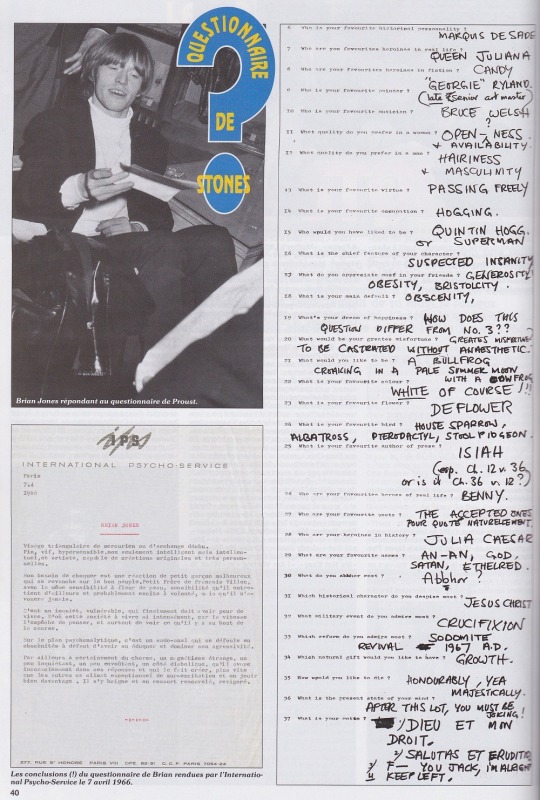
QUESTIONNAIRE DE STONES - BRIAN ANSWERS - 1966
Brian Jones répondant au questionnaire de Proust.
Brian Jones responds to the Proust questionnaire.
note: cannot find the first 5 questions, nor the magazine this is from. this seems like a badly-translated version of the proust questionnaire. image taken from @sophiajones13
PSYCHOANALYSIS (BOTTOM LEFT OF THE IMAGE) NOW TRANSLATED AND POSTED HERE!!!!!
6. Who is your favourite historical personality?
MARQUIS DE SADE
7. Who are your favourite heroines in real life?
QUEEN JULIANA
8. Who are your favourite heroines in fiction?
CANDY
9. Who is your favourite painter?
"GEORGIE" RYLAND. (late senior art master)
10. Who is your favourite musician?
BRUCE WELSH ?
11. What qualities do you prefer in a woman?
OPEN-NESS. + AVAILABILITY.
12. What qualities do you prefer in a man?
HAIRINESS + MASCULINITY
13. What is your favourite virtue?
PASSING FREELY
14. What is your favourite occupation?
HOGGING.
15. Who would you have liked to be?
QUINTIN HOGG. or SUPERMAN
16. What is the chief feature of your character?
SUSPECTED INSANITY
17. What do you appreciate most in your friends?
GENOROSITY, OBESITY, BRISTOLCITY.
18. What is your main default?
OBSCENITY,
19. What's your dream of happiness?
HOW DOES THIS QUESTION DIFFER FROM No. 3 ??
20. What would be your greates(t) misfortune?
GREATES MISFORTUNE? TO BE CASTRATED WITHOUT ANAESTHETIC.
21. What would you like to be?
A BULLFROG CROAKING IN A PALE SUMMER MOON WITH A COWFROG
22. What is your favourite colour?
WHITE OF COURSE !!!
23. What is your favourite flower?
DEFLOWER
24. What is your favourite bird?
HOUSE SPARROW, ALBATROSS, PTERODACTYL, STOOL PIGEON.
25. What is your favourite author of prose?
ISIAH (esp. Ch. 12 v. 36 - or is it Ch. 36 v. 12?) [Note: it is Ch. 36 v. 12.)
26. Who are your favourite heroes of real life?
BENNY.
27. Who are your favourite poets?
THE ACCEPTED ONES - POUR QUOTE NATURELLEMENT.
28. Who are your heroines in history?
JULIA CAESAR
29. What are your favourite names?
AN-AN, GOD, SATAN, ETHELRED.
30. What do you abbhor most?
Abbhor?
31. Which historical character do you despise most?
JESUS CHRIST
32. What military event do you admire most?
CRUCIFIXION
33. Which reform do you admire most?
SODOMITE REVIVAL 1967 AD,
34. Which natural gift would you like to have?
GROWTH.
35. How would you like to die?
HONOURABLY, YEA MAJESTICALLY
36. What is the present state of your mind?
AFTER THIS LOT, YOU MUST BE JOKING!
37. What is your motto?
¹/ DIEU ET MON DROIT
²/ SALUTAS ET ERUDITIO
³/ F--- YOU JACK, I'M ALRIGHT
4/ KEEP LEFT.
45 notes
·
View notes
Photo

28 décembre 1708 : mort du botaniste Joseph Pitton de Tournefort ➽ http://bit.ly/Joseph-Tournefort Se livrant avec passion à la recherche des plantes dès son plus jeune âge, Tournefort, dont la vocation fut un temps contrariée en raison de la volonté paternelle, fit avancer la classification en botanique et acquit une solide réputation sitôt publié son premier ouvrage
#CeJourLà#28Décembre#Tournefort#Botaniste#Botanique#Classification#Plantes#Fleurs#Arbres#Flore#Sciences#Naturelles#Scientifique#histoire#france#history#passé#past#français#french#news#événement#newsfromthepast
3 notes
·
View notes
Text
Researchers reporting in the journal Current Biology on December 4 have found the earliest-known fossil mosquito in Lower Cretaceous amber from Lebanon. What's more, the well-preserved insects are two males of the same species with piercing mouthparts, suggesting they likely sucked blood. That's noteworthy because, among modern-day mosquitoes, only females are hematophagous, meaning that they use piercing mouthparts to feed on the blood of people and other animals. "Lebanese amber is, to date, the oldest amber with intensive biological inclusions, and it is a very important material as its formation is contemporaneous with the appearance and beginning of radiation of flowering plants, with all what follows of co-evolution between pollinators and flowering plants," says Dany Azar of the Nanjing Institute of Geology and Paleontology at the Chinese Academy of Sciences and the Lebanese University. "Molecular dating suggested that the family Culicidae arose during the Jurassic, but previously the oldest record was mid-Cretaceous," says André Nel of the National Museum of Natural History of Paris (Muséum National d'Histoire Naturelle de Paris). "Here we have one from the early Cretaceous, about 30 million years before." The Culicidae family of arthropods includes more than 3,000 species of mosquitoes. The new findings suggest that male mosquitoes in the past fed on blood as well, according to the researchers. They also help to narrow the "ghost-lineage gap" for mosquitoes, they say.
Continue Reading.
187 notes
·
View notes
Text
Episode 109: Let's Get Kraken

In the most recent episode, Cody and Garth dive into the deep waters to talk about Kraken! And in Garth's corner, he covers the art of figureheads (the sculptures of the front of ships)!
Enjoy the images discussed in the episode below (trigger warning: the last two images are of dead animals, there's no blood or obvious signs of distress but y'all deserve a warning nonetheless)! And please come join the episode discussion on the Least Haunted Discord!
Sorry for the late post, I was hunting for a lake monster!
The book Cody read for the episode: Monsters of the Sea by Richard Ellis.

The Swine Whale (left) and possibly Kraken (right) Carta Marina map of Scandinavia (1539).

Illustration by Denys de Montfort. Historie naturelle des Mollusques (1802).

In 1861 the French ship Alecton recovered part of a Giant Squid, Achiteuthus. This event would inspire Jules Verne when writing 20,000 Leagues Under The Sea.

A Scandinavian grapnel anchor, aka Krake, made from the top of a spruce tree.
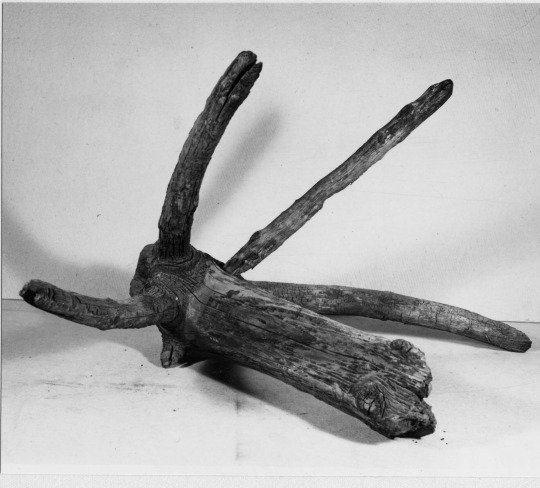
"The Kraken" in 1981's Clash of The Titans, although a feat of stop motion animation by Ray Harryhausen, NOT A KRAKEN.

The Mollusk album by Ween. The inspiration for SpongeBob SquarePants according to show creator, Stephen Hillenburg.

They Might Be Giants album Apollo 18 limited edition Zoetrope vinyl! Only 240 were ever made, Cody has #195 and Garth has #196.

GARTH'S CORNER, GARTH'S CORNER, GARTH'S FIGUREHEAD CORNER!
Here are some of the figureheads mentioned in Garth’s Corner. Special props to the YouTube Channel Baltic Empire for “Carved works and Figureheads: A History of Ship Decorations.” Garth also credits Chris Riley for his article “The History of Ship Figureheads.”
Here’s a carving of an elk’s head found in Säkkijärvi, Finland. It was made between 1750 and 1,500 BCE and is thought to have been attached to the front of a boat.

Some examples of Greek Ships with eyes.

The Oseberg Ship, a lavish ship that was buried in Norway some time in the 800s CE.

A model of the 80-gun Naseby (1655) showing Oliver Cromwell on a horse.

A mezzotint etching by Robert Sayer “Hercules as Ship's Figurehead” (1788).

A modern ship, Neptune, a replica of a 17th century Spanish galleon, originally built for the film "Pirates" (1986).
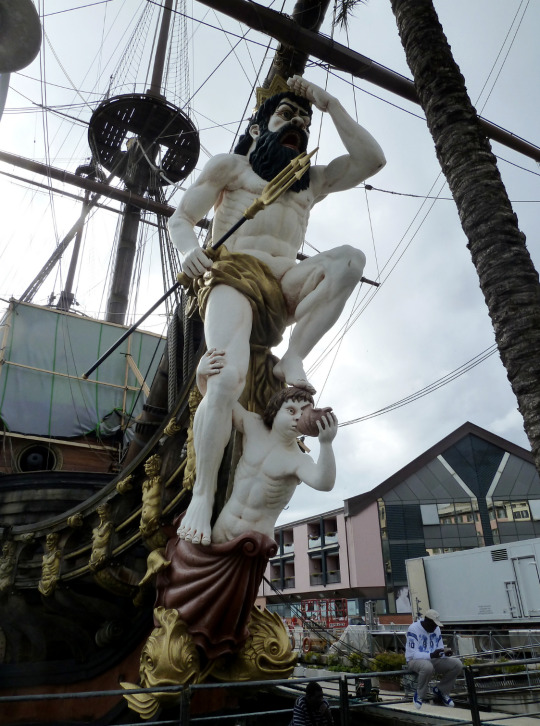
And finally, here’s an awkward mermaid Garth saw online. Not sure where he found it but here she is.

~~~~~~~~~~~~~~~~~~~~~~ Trigger Warning Below ~~~~~~~~~~~~~~~~~~~
Dead Sperm Whale with squid scars on its skin.
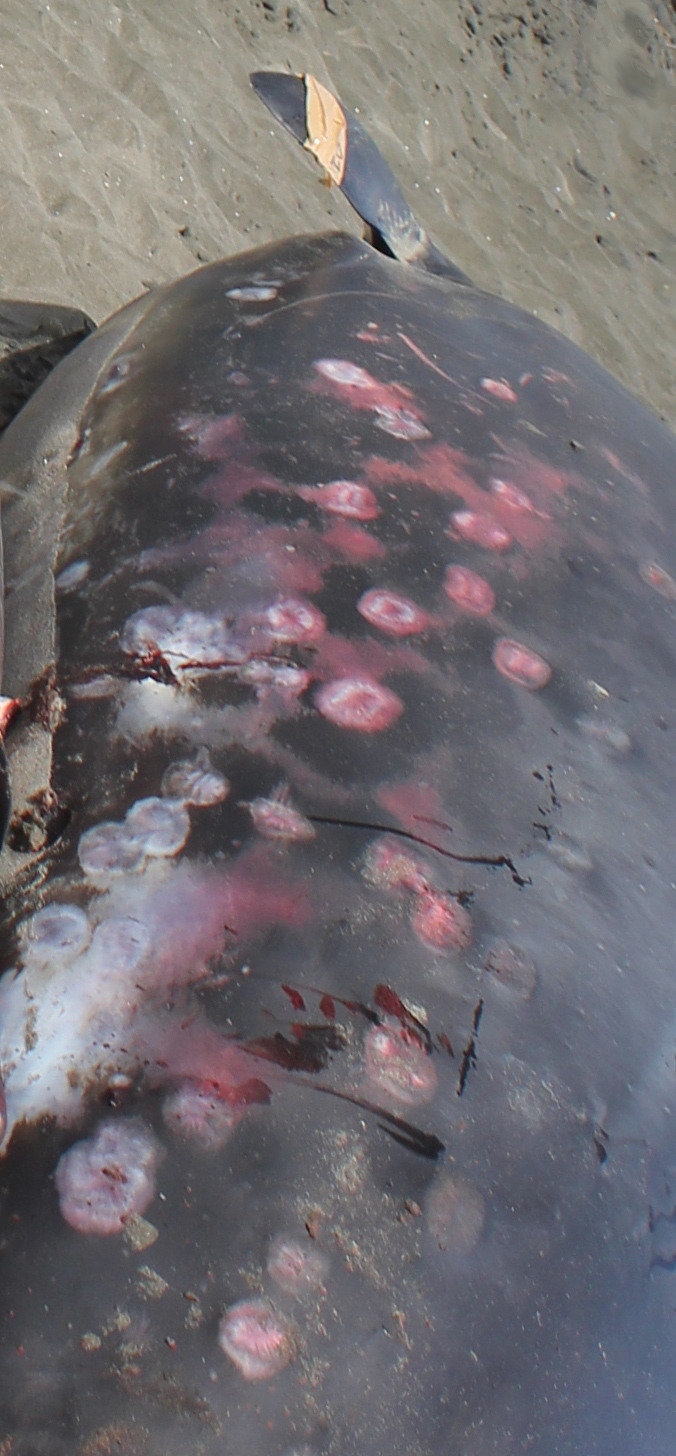
Dying Architeuthis found in Toyama Bay, Japan 2015.

#leasthaunted#podcast#funny#paranormal#podcasts#skeptics#garth's corner#kraken#cryptozoology#cryptids#mermaids#figurehead#squids
34 notes
·
View notes
Text







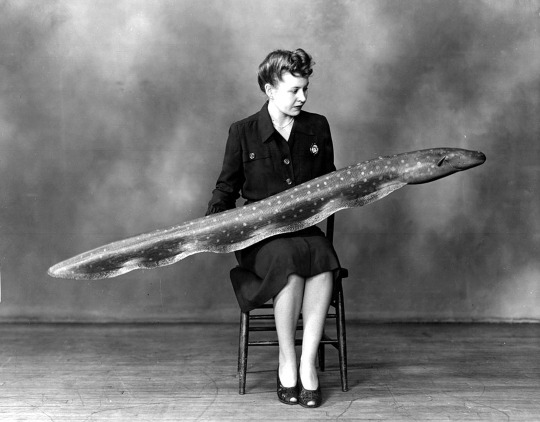


unknown photographer - Wrecked - 1922
Alfred Eisenstaedt (German/American, 1898-1995) - A man standing in the lumberyard of Seattle Cedar Lumber Manufacturing - 1937
Alice Posluszna (working in Poland) - The Indoctrination - 2019 - www.instagram.com/alicja_posluszna/
Ján Cifra (Czech, 1929-1959) - Sand Dunes, Vietnam - 1956
Richard Nash (UK) – Monument to Ralph of Shrewsbury, Bishop of Bath and Wells (died 1363) - Wells Cathedral, Somerset
Justin Alexander Bartels (working in San Diego) - BOUDOIR-LICIOUS Lingerie - IMPRESSION series - justinalexanderbartels.com
Gérard Uféras (French, b.1970) - Museum d'histoire Naturelle Galerie de Paléontologie - Paris - Octobre 2016
unknown photographer - Helen Moyer with Electric Eel model - The Field Museum of Natural History - Chicago - 1947
unknown photographer - Nan Wood Graham and Dr. Byron McKeeby at the Grant Wood Memorial Exhibition - Gallery at the Cedar Rapids Public Library - September 1942
Jean Dieuzaide (French, 1921-2003) - La Petite Fille au lapin (Little Girl with a Rabbit) - Portugal - 1954
#art by others#other's artwork#photography#Alfred Eisenstaedt#Alice Posluszna#Ján Cifra#Richard Nash#Justin Alexander Bartels#Gérard Uféras#Jean Dieuzaide
48 notes
·
View notes
Text
From the seventh floor at Kherson State University, Oleksandr Khodosovtsev and Ivan Moisienko had a clear view of the enemy. It was a cool December morning, and the Russian troops that had occupied the Ukrainian city of Kherson since the earliest days of Moscow’s full-scale invasion had recently retreated east across the Dnipro River. Mushroom clouds hung over the horizon as they gazed through the rattling floor-to-ceiling windows of the botany department. The explosions, they thought, were likely coming from the tanks less than 5 kilometers away from where they stood.
That morning, the pair—both professors of botany—had arrived on the train from Kyiv and made their way through the partially ruined streets of Kherson to reach the university. The city was still being shelled, and to access their laboratory meant scaling a spiraling stairwell lined with stained-glass windows looking out over the Dnipro River, towards the enemy.
Their mission was to rescue a piece of history: the Kherson herbarium, an irreplaceable collection of more than 32,000 plants, lichen, mosses, and fungi, amassed over a century by generations of scientists, some from thousand-kilometer-long treks across remote areas of Ukraine. “This is something like a piece of art,” says 52-year-old Moisienko. “It’s priceless.”
Herbaria like the one in Kherson, a port city in the south of Ukraine, are about more than just taxonomy. They serve a vital role in the study of species extinction, invasive pests, and climate change. Though it's by no means the world’s largest—the Muséum National d’Histoire Naturelle in Paris has 9,500,000 specimens—Kherson’s herbarium is, Moisienko says, valuable because of its unique contribution to the field. Rare species found only in Ukraine, some of which are at risk of extinction, are documented on its shelves.
When Russian tanks rolled into Ukraine on February 24, 2022, they threatened not only the thousands of dried, pressed, and preserved specimens stored at the university, but the land where those samples had been collected. In the more than 17 months since Vladimir Putin declared his “special military operation” in Ukraine, millions of acres of land—about 30 percent of the country’s protected areas—have been maimed by indiscriminate bombing, burning, and military maneuvers. Russian troops have scorched tens of thousands of hectares of forests and put more than 800 plants at risk of extinction, including 20 rare species that have mostly vanished from elsewhere, according to the non-profit Ukraine Nature Conservation Group (UNCG).
The Ukrainian government estimates that a third of the country’s land has been contaminated by mines or other unexploded ordnance. Large swathes of the countryside could remain inaccessible for decades to come. That means it could be a long time before scientists like Khodosovtsev and Moisienko can go back out to collect samples.
The pair weighed up these considerations last fall, as they contemplated returning to the hollowed-out city of Kherson. Russian forces had been pushed out of the city in November but continued to bombard it. Between May and November, at least 236 civilians were killed by shelling, according to regional officials. Regardless, Khodosovtsev and Moisienko decided to go in.
“There is no need to risk anyone's life to save some equipment or a building,” Moisienko says, noting with passing remorse how he’d been pained to leave behind one of his prized microscopes. “For this collection, when it's gone, it's gone. There is no way to get it back.”
As the pair began mapping out the evacuation, they determined that in order to mitigate risk on the ground they needed to limit both the number of people and time spent inside the besieged city. There would never be more than three team members—Khodosovtsev, Moisienko and one of their two colleagues—on a trip, and each venture would last no more than 72 hours. The power grid went down regularly, and there was a citywide curfew of 4 pm, meaning they had hard deadlines to get in and out of their lab. And there was bureaucracy. “During the wartime, even to get around the country, you need to have some substantiation, like documents,” said Khodosovtsev, 51.
That got even more complicated when, on their first trek back to the university that December, they discovered that Russian troops had taken up residence in four of the rooms storing part of the plant collection.
Besides the deep sense of violation the botanists felt, this also posed a procedural problem. The “sitters”—a common expression for enemy soldiers who have occupied a Ukrainian building—had changed the locks on all but one of the doors, and the spaces now needed to be documented; a mandatory procedure typically carried out by the local police. Thankfully, their logistics team pulled some strings and got the process expedited. In just a few weeks, the locks had been changed again, and the rooms had been photographed for the official records.
In video footage capturing that first, largely fruitless trip, Khodosovtsev can be seen celebrating the return of one of the 24 more valuable boxes with a kind of enthusiasm typically reserved for the football pitch. “Collemopsidium kostikovii is saved!” he cheers as he raises his fist over his head. “To the sound of explosions!” he adds, as the rumble of mortars interrupts his brief moment of self-congratulation.
Limited resources, another knock-on effect from the ongoing conflict, also threatened to upend the men’s carefully laid plans. While Moisienko drove around to dozens of Kyiv’s home hardware stores in search of plastic boxes to transport the collection’s vascular plants, Khodosovtsev returned to Kherson equipped with little more than a headlamp strapped across his brow and a backpack filled with the same household tools you might use to move apartments.
On this second trip, the magnitude of the task became clear to Khodosovtsev. He had 700 boxes to evacuate. On his first incursion, it had taken him 15 minutes—and way too much tape—to wrap, stack, and rope together half a dozen boxes of samples. At this rate, the botanist said, he’d be blowing past the three days earmarked for this section of the herbarium. Never one to be discouraged, the scientist settled into familiar territory and began doing what he does best: calculating.
“Just two wraps of sticky tape and one roll of rope,” he said, beaming as he reveled in how he’d managed to shave his box-stacking time to just “three and a half minutes.”
This kind of methodical precision proved to be a helpful distraction from the realities of what was going on just beyond the paned glass. A mere 24 hours before Moisienko returned for his third and final trip on January 2, he learned the building where he planned to scoop up the last portion of the herbarium was hit by shelling. Instead of this news derailing his mission, it only seemed to harden him. “We are focused on [the herbarium] so much that you just ignore everything, all these shellings that [are] going on around you,” he said.
Even so, as he worked methodically, packing plant after plant, he started to contemplate how the glass windows of the lab could become deadly projectiles if a shell went off nearby; and how far it was down to the ground floor. At eight stories tall, the academic building sticks out. “The chance the Russians would hit the university building [was] really high,” he says.
He tried to treat the nearby rumbling as white noise, though one day, a shell landed just outside the window as he was packing a sample.
By January 4, Moisienko had finished loading up the last boxes of the collection into the back of a truck. It traveled west for nearly two days, covering approximately 1,000 kilometers, before reaching Vasyl Stefanyk Precarpathian National University in Ivano-Frankivsk in Western Ukraine, the institution that has served as a university in exile for the staff and students of Kherson State University for more than a year.
It’s a kind of safety. But, as Moisienko points out, only as safe as anything or anyone can ever be in a country where missiles fall out of the sky on a near daily basis. “Nowhere in the country is 100 percent safe,” he says.
On January 11, Kherson State University was once again struck by shelling, this time only blocks away from where Moisienko had been working less than a week earlier. “That building remains [in] danger, and it's still dangerous to be in Kherson as it’s shelled still now on a daily basis,” Moisienko says. “We've done the right thing.”
232 notes
·
View notes
Text




Fashion History Challenge 2025 Day 17 (1890s)
For day 17 of @foreverinthepagesofhistoryy challenge, i found some fashion plates i really liked, they are taken from the METs costume institute fashion plates.
The first one is from 1899 and written in french it says: Toilette du soir por jeune femme : en crépe de Chine citron garnie de ruchettes de mousseline de soie ; triple lien de velours retenant le corsage sur l'ėpaule droile ; guirlande de fleurs sur l'ėpaule gauche.
The second one is from 1899 and written in french it says: Robe de Soirée en satin citron voilé de tulle perlé et pailetté; draperie de tulle au décolleté. Ceinture en taffetas rose.
The third one is from 1893 and written in french it says: Robe de mousseline d l'Inde bleu turquoise morte, imprinee de fleurs japonaises de contours vagues et de tons éteints, et brodée.
The fourth one is from 1896 and written in french it says: Robe pour jeune femme ; jupe et manches en lainage fantaisie ; corsage et épaulettes brodés. Chapeau en mousseline de soie de deux couleurs avec næud-aigrette et jarretiére en ruban imprimé. Ombrelle en soie pékinée avec manche en bois naturel.
#historical fashion challenge 2025#i wanted to write out the french because it describes what the outfits are#im pretty sure the last one did write an æ but its like an a and e put together#had to miss some days cause ive been ill :(
6 notes
·
View notes